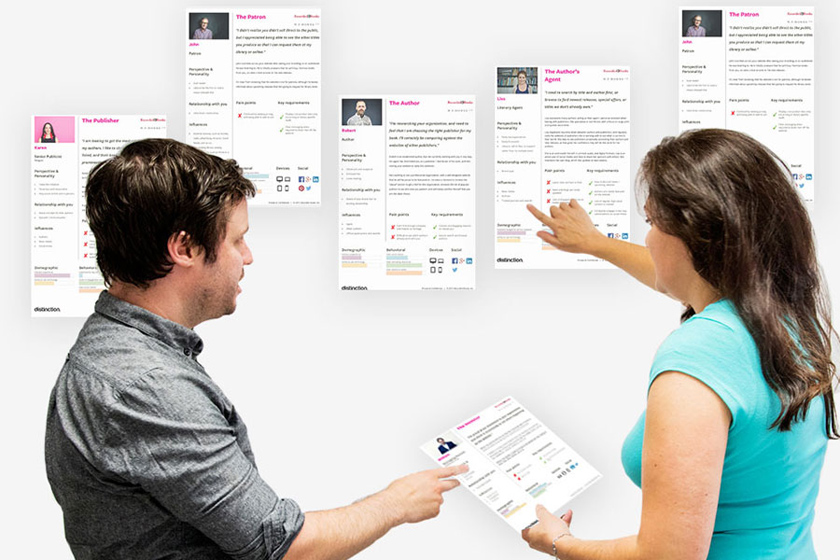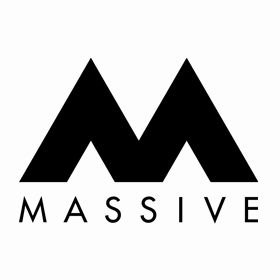
How To Create Personas For Marketing In 2021
Creating buyer personas will help you determine your marketing strategy by illuminating who the buyers are, the situations they are faced with and most important – what goals they are attempting to accomplish.
What is a marketing persona?
A persona in the context of marketing refers to the ideal customer or customers for your business. They are defined by a mixture of any of the following attributes or activities:
- demographic
- shopping habits
- location
- job role / description
- interest in product
- need for product
A marketing persona is a “fictional” representation of an actual user and is applied in the early stages of product development or product redesign.
Personas are vital to the success of a product because they drive design decisions by taking common user needs and bringing them to the forefront of planning before design has actually started.
Buyer personas are important because without knowing who your ideal customers are, it is very difficult to create an effective marketing strategy to attract more of those types of people. A buyer persona is a semi-fictional representation of your ideal customer, their backgrounds, goals, challenges, and so on, based on market research and real data about your existing customers. Without understanding ideal customers inside and out, marketing efforts and business growth can take the risk.
They’re fundamental to marketing because without knowing them, you will never be able to offer anything other than a generic message that is designed to ‘catch all’ and hope that it resonates with the majority of your audience.
Personas for marketing should be a staple of your strategy to make better decisions and investments.
If it’s something you have yet to start then don’t worry, you’ve got this far without them. But chances are you’re not growing at the rate you want to or forecasted, so there’s no time like the present.
Are there different types of marketing personas?
Marketing personas can vary hugely, from industry vertical to vertical, from B2B to B2C and from country to country. Because personas can be defined by so many different variables, it really does depend on how a business track and store the data for a potential customer.
Comprehensive digital marketing courses can improve your perspective about marketing personas and make you more successful marketer.
How to create personas – quantitative or qualitative research?
If you know attributes of the customer before they come to your digital asset, then you can segment them based on what you know. If you don’t know then you could ‘score’ them based on certain activity they take on the site. This is commonly known as lead scoring.
The key is not to just segment them but to understand how each ‘group’ behaves and interacts with the website/app so you can identify key trends between them. These trends may cross groups which means you are able to join them together to create a larger group connected by their behaviour.
Here are three tips to create your marketing personas that use a mix of quantitative and qualitative methods of research:
1. Download your sales data and go pivot crazy in Excel
Your historic sales data is a rich source of customers with quantitative attributes. These are people that have already bought from you, and understanding why they did so is key. Look for the following attributes/activity:
- Define low/medium/high spend thresholds – this can help you if you have the opportunity to cross-sell and upsell. It can also help you reward higher spenders or incentivise lower spenders with offers or discounts.
- Job role – do C-suite people buy from you more than executives?
- Location – do certain areas spend more than others, do they buy certain products over others?
- Gender and age – this is common to track baby boomers, millennials or gen z as those in the same generation typically have similar shopping habits.
- Days of the week – it’s always surprising how many people buy on a particular day of the week. It might not surprise you to know more people shop at the weekends, but how about between 8-12 on a Monday morning? We have a client with exactly that pattern of shopping behaviour.
- Buying single or multiple items – this can help you tailor messaging and targeting with cross-selling opportunities and limited time offers.
- Country – another location-based attribute but shopping behaviour really can differ depending on the country.
I’m not saying you need to create messaging for each marketing personas, but if you can identify trends across them then you have the makings of a persona.

2. Lead score key activities
Lead scoring is essentially giving an action taken on the site an amount of points that corresponds with how important it is to you as a business.
As I mentioned in this recent automation article, this starts with a simple spreadsheet and scores attributed across activities. These activities can include:
- Downloading something
- Filling in a form, or filling in a form in which a particular field is tracked (eg a ‘Job Role’ field where they answer with ‘CEO’ is more valuable to you than ‘Executive’ or ‘Junior’ if you sell to c-suite people)
- Visiting a page (or a set of pages)
- Watching a video
- Subscribing to a newsletter (remember that unsubscribing is equally important to track)
Once you have defined the actions you want to score on the site, you can assign a score which leads to thresholds. Typically, these are usually broken down into following scenarios:
- Cold lead = Less than 100 points – this person is not interested yet and may have only been lightly browsing at the time.
- Warm lead = 100-200 points – Interested and nearly ready to purchase, may need more time but also may only need a nudge in the right direction.
- Hot lead = Over 200 points – ready to buy and should be reached out to by the sales team for follow up.
These actions and points can help you a lot for defining your marketing personas.
3. Interview, interview, interview
Interview previous or existing customers (feedback forms), customers on the website (live polls, chat, etc), find out why they bought form you and what helped them make their decision. However, the most important group to interview is your sales team.
These men and women are the closest to your customers and know who they speak to day in, day out. They speak to people and listen to their needs, know shopping behaviour and hear common reasons for buying etc. They will be able to tell you, probably without looking, who the most common customers are and the trends the see between those groups we mentioned above.
Interviews are arguably the best source of qualitative data you can get. It can be inexpensive and great for initial learning but there is a big caveat to it that it is not representative of your whole customer spectrum. However, the feedback you get will be incredibly valuable, personal and give you insights into some idiosyncrasies that some of your personas may have that you could leverage.
Interviews tend to be the first port of call when figuring out personas but can also be utilised later to test and get feedback on your positioning to them.
One of the hardest parts of buyer persona creation comes up with the questions that will form buyer persona research.
Creating questions and answering them in the manner that ideal customers respond can be complicated. At this point, MakeMyPersona, a tool that created by HubSpot, can help to find out a buyer persona and then you can integrate it to your marketing strategies.
MakeMyPersona tool is an interactive web tool that generates buyer personas for marketers, brands, startups, big and small business after responding a series of questions about ideal customers.

What to do with this information
Once you have these trends, data and anecdotes, you can begin to put together cross-sections that represent particular customers that you can tailor messaging to and potentially start to market to differently.
Profiles should be created that contains key information about that person, their likes, dislikes, shopping habits, demographic information.
These techniques will allow you to put together robust, reliable personas that will allow you to quickly help your team understand who you are talking to, how you will talk to them, and ultimately how you can set proposition messages against products that are suitable to different groups.
At a very simple level, think about how P&G sell Head and Shoulders. They proposition their product to women with regards to the quality of a wash or the visual benefits using their product has on your hair.
For men, it’s more geared towards being active (using footballers as their ad models) and a lifestyle choice to look good whilst you are doing said activity.
The messaging, tone of voice and benefits to each demographic is completely different. I appreciate that this is a simple men v women example but illustrates my point about needing to have different marketing strategies for different audiences (or personas). Here are 10 more examples of fantastic persona examples from Alexa to help you get started.
Quantitative and qualitative orientations to collecting data both have pros and cons. Ideally you would start with the qualitative data, so you can understand the market. Armed with this knowledge, you can then move to quantitative research to measure the variables you’ve discovered in the qualitative research phase.
Get started on the above by downloading our guide to creating marketing personas for your business. If you still need help, then just reach out and we’ll see how we can work together.























